Biology - NUTRITION AND DIGESTION
1/33
Earn XP
Description and Tags
Name | Mastery | Learn | Test | Matching | Spaced |
|---|
No study sessions yet.
34 Terms
what atoms are carbohydrates made up of?
glucose or maltose
what are proteins made up of?
amino acids
what are lipids made up of?
fatty acids and glycerol
what atoms do carbohydrates contain?
carbon
hydrogen
oxygen
what atoms do proteins contain?
carbon
hydrogen
oxygen
nitrogen
what atoms do lipids contain?
carbon
hydrogen
oxygen
tell me about Benedict's food test
test for glucose
blue to brick red
tell me about Biuret's food test
test for proteins
blue to lilac
tell me about Iodine Solution food test
test for starch
orange brown to blue black
tell me about ethanol food test
test for fats
transparent to milky white
what are the 7 essential nutrients
carbohydrates
proteins
lipids
vitamins
minerals
water
fibre
what does vitamin A do
improves vision
keeps skin and hair healthy
what does vitamin C do
prevents scurvy
what does vitamin D do
helps calcium absorption
what does calcium do
strengthens bones and teeth
what does iron do
makes haemoglobin for healthy blood
what do digestive enzymes do
break big molecules into smaller ones
examples of big molecules
starch
protein
fats
examples of small molecules
sugars
amino acids
glycerol
fatty acids
amylase converts … into …
maltase converts … into …
starch into maltose
maltose into glucose
proteases converts … into …
proteins into amino acids
lipases convert … into …
lipids into fatty acids and glycerol
bile … the stomach acid and … fats
neutralises emulsifies
bile is produced in the …
stored in the …
then released into the …
liver
gall bladder
small intestine
bile is alkaline, it neutralises the … in the … and makes conditions alkaline
hydrochloric acid, stomach
bile breaks down fats, what is the effect on digestion
bigger surface area so faster digestion
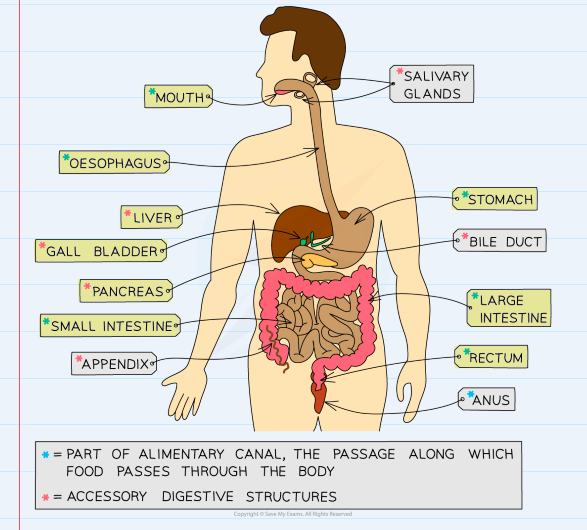
MOUTH - what enzyme do the salivary glands produce
amylase
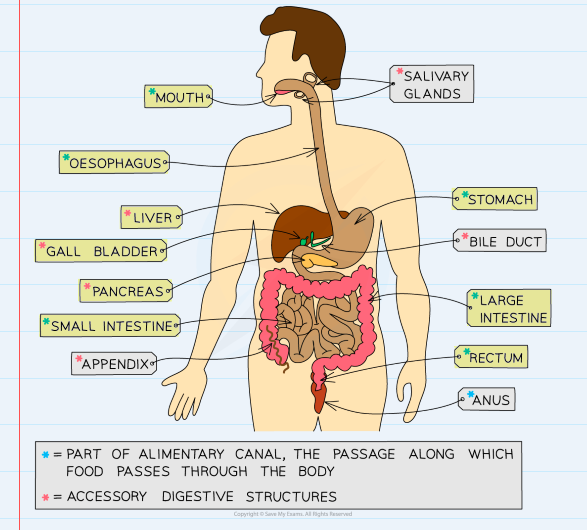
STOMACH - what enzyme does it produce
protease
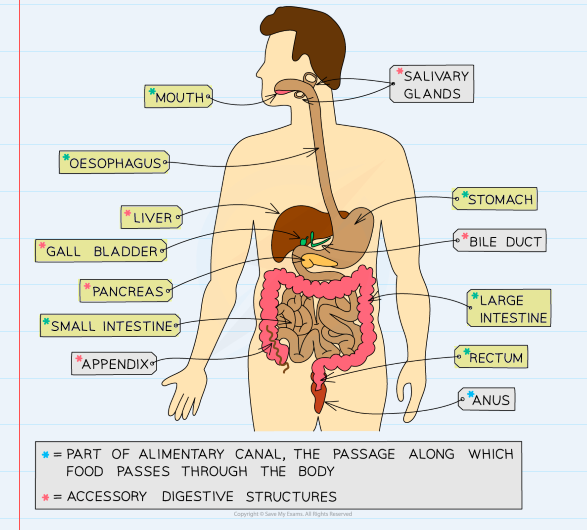
STOMACH - what is the hydrochloric acid used for
kill bacteria
create an optimum pH (2)
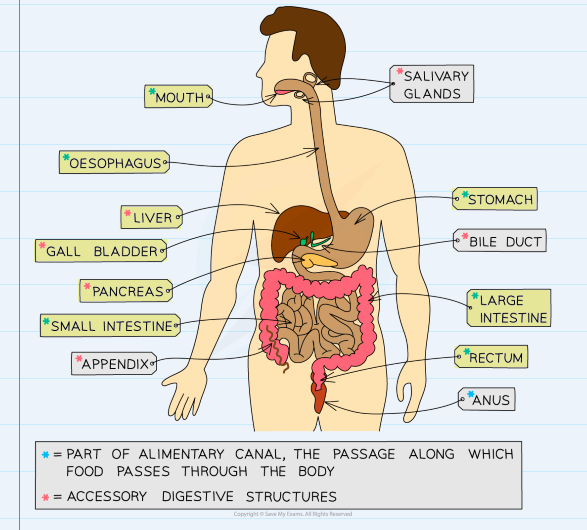
LIVER - where … is produced
bile
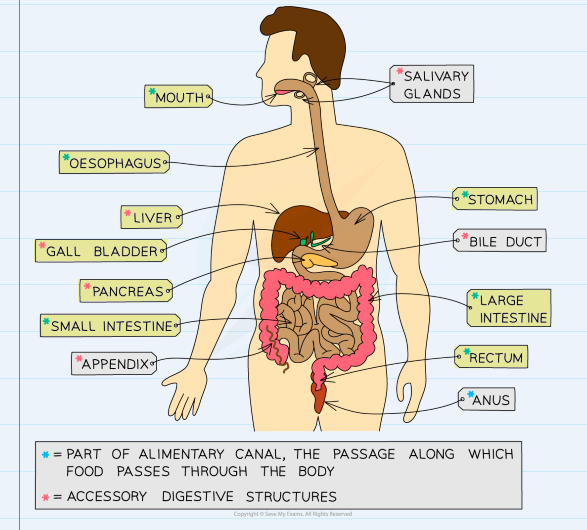
GALL BLADDER - where … is stored
bile
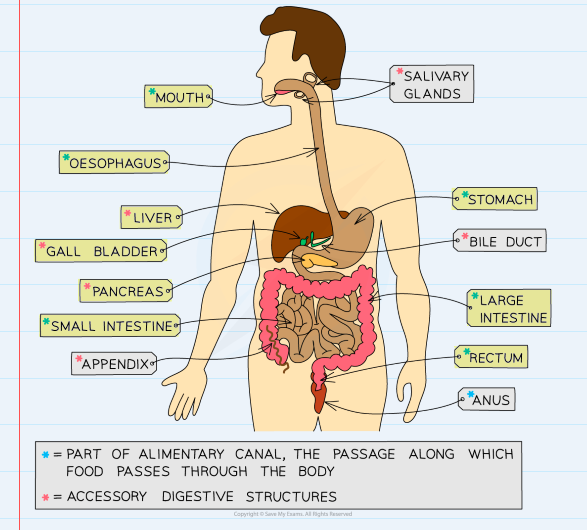
PANCREAS - what 2 enzymes does it produce
protease
lipase
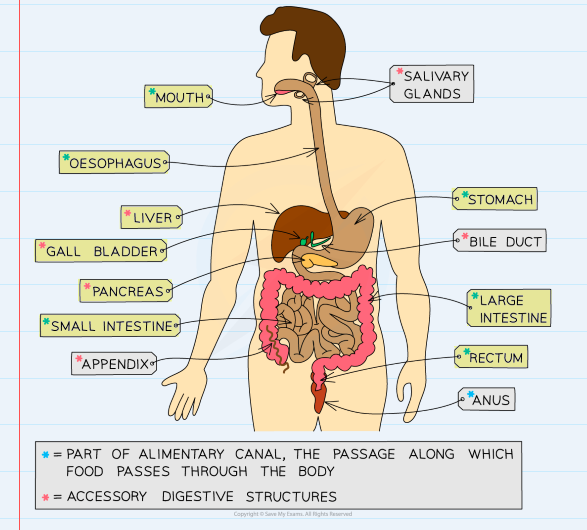
SMALL INTESTINE - what 3 enzymes does it produce
amylase
protease
lipase
what do villi do
and where
help with absorption, make a bigger surface area
small intestine